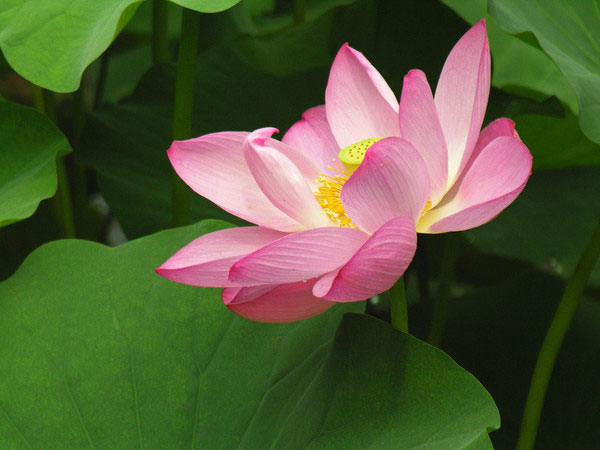How to Grow Lotus: Growing and Caring for Lotus
Written by Iris
Dec 11 2021
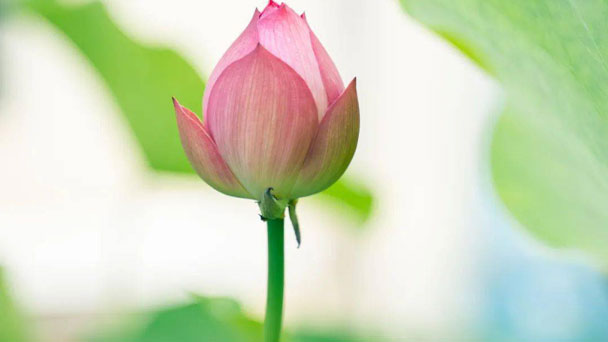
Lotus (Water lily) is a symbolic aquatic plant known in many warm regions of the world. Their amazing flowers come in a variety of colors, and their floating leaves have been loved for centuries. In addition to producing edible tubers, seeds are also edible, and the pods of these plants are used for floriculture.
For each lotus root, choose a large container that’s at least 10 inches in diameter with no drainage holes. Save yourself some trouble and get a container with sturdy handles as you'll be moving it quite a bit. If you're not going the pond route, use a large, water-tight container. Many gardeners have used a barrel or even a trash can. For growing lotus indoors, choose a large bowl or decorative pot.
Once the cream coloured core is visible then stop scrapping. Perform this step very carefully to avoid any damage. After scrapping put the seeds in a transparent bowl or any container and fill with it water. Make sure that the temperature of water should be around 24 to 27 degrees celsius.
Keep it indoors, and check on the next day for floating seeds in the water. Remove the floating seeds from the water and leave the sunken seeds in the container. Floating seeds are infertile and will not germinate.
Keep changing water in the container daily. Seeds will start sprouting within 7 to 10 days. Once the seeds have sprouted then change the water very carefully on daily basis. When your seedlings reaches 6 inches in height and have developed one to two small leaves then you can start transplanting.
Fill the bigger tank with water and the smaller one with potting mix. Water evenly in the smaller pot to wet the soil. Place the tuber on the soil and keep the growing regions like leaf portions upwards. Cover a little bit of tuber with soil but do not completely submerge it in the soil.
Put some small stones on the covered portion of the tuber so that it does not float in water. Now it is the time to submerge the smaller pot in the tank or tub. The level of water in the bigger pot or tub should be 2 to 4 inch high than the height of smaller pot.
Place your pot in a sunny spot that receives bright sunlight, and after 4 to 5 days you will notice new growth in the lotus tuber.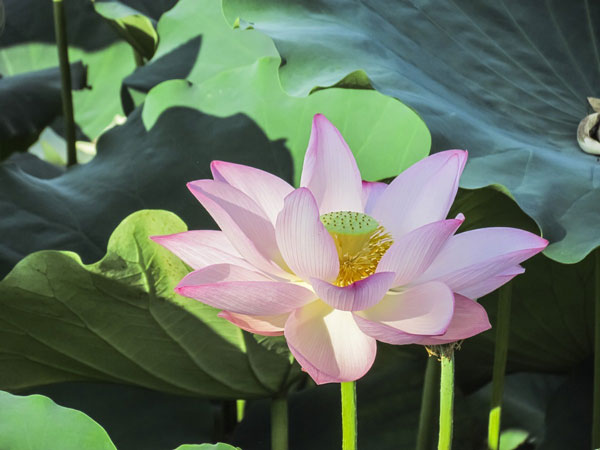
For soil you can buy soil made especially for pond plants, or use a heavy topsoil or clay. Do not use garden soil or anything with peat moss or too much organic material because some of this material will float in the water and soil too high in organic matter will tend to make your newly planted seeds or tubers rot.
You can however use a small amount of compost in your soil. Try a mix of 80% clay or topsoil with 20% composted soil. Blend well before adding water.
Dwarf lotus varieties can grow up to 1 foot tall with leaves 2-3 inches in diameter. Some other lotus varieties can reach a height of 6-8 feet tall with leaves 18-36 inches in diameter.
Tropical water lilies can be stored over winter by lifting the plant from the container and storing the rhizome in a plastic bag full of damp sand or a mix of damp sand and peat moss at 50 to 55 degrees Fahrenheit.
If you're growing lotus root as a perennial, repot it every 3-4 years with fresh soil. If the lotus root has filled the entire container, you'll need to divide to propagate them or use a larger pot.
aphids, whitefly, and spider mites: diatomaceous earth powder
China mark moth: Dipel
slugs and snails: relocate plants further away from the water's edge
consider this: once your plant has some aerial growth, you can remove all floating leaves, which helps mitigate the presence of some insects.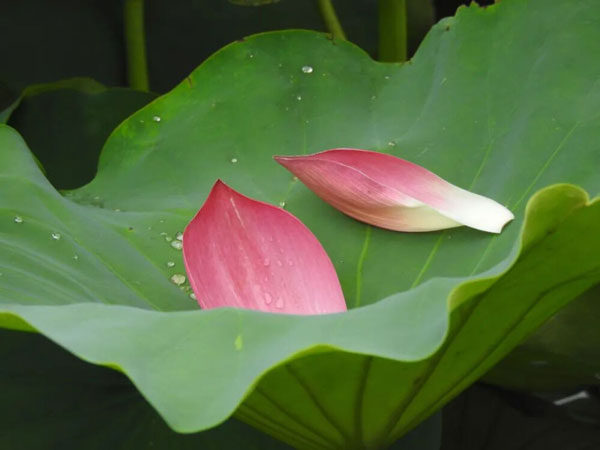
For the roots you’re going to eat, give them a good wash and keep them in the fridge. As long as they’re kept cool and in the dark, they’ll last all winter. There are several lotus root recipes out there, such as stir-fried lotus or crunchy lotus chips. The seeds are also edible and excellent in curry.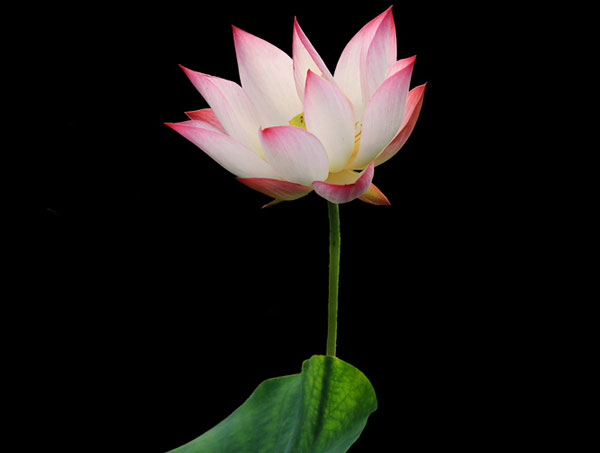
Where to Grow Lotus (Water lily)When to Grow Lotus (Water lily)How to Grow Lotus (Water lily)Lotus (Water lily) Propagation with SeedsLotus (Water lily) Propagation with TubersHow to Care for Lotus (Water lily)Lotus Lighting RequirementsLotus Soil CareLotus WateringLotus Temperature & Humidity CareLotus FertilizerLotus PruningLotus Pests & Diseases CareLotus (Water lily) HarvestingLotus (Water lily) StoringVarieties of Lotus (Water lily)Lotus (Water lily) FAQIs the lotus plant edible?How do you care for lotus plants in winter season?Why the leaves of lotus plant turn yellow?
Where to Grow Lotus (Water lily)
If you take one thing away from this article, know that lotus root should absolutely be planted in a container. When planted directly at the bottom of a pond, the lotus tubers will spread like crazy. They're hard to control – especially since you’d have to drain the pond or go swimming to access them. growing lotus in a pot sunk in the pond ensures they stay put. It’ll also be much easier to remove the plant from the pond for harvesting or overwintering.For each lotus root, choose a large container that’s at least 10 inches in diameter with no drainage holes. Save yourself some trouble and get a container with sturdy handles as you'll be moving it quite a bit. If you're not going the pond route, use a large, water-tight container. Many gardeners have used a barrel or even a trash can. For growing lotus indoors, choose a large bowl or decorative pot.
When to Grow Lotus (Water lily)
Lotus (Water lily) can survive in temperate as well as tropical to sub-tropical regions. But, lotus plant do not love extreme cold or heat. Lotus (Water lily) can thrive well in areas having temperature range of 20 to 35 degrees celsius during summer season. Spring is considered as the best season for propagation of lotus plant.How to Grow Lotus (Water lily)
Lotus (Water lily) Propagation with Seeds
To grow lotus from seeds you can purchase seeds from online stores such as Amazon and Flipkart. Once you have purchased the seed then scrape the pointed end of the seed with the help of a scrapping paper or knife.Once the cream coloured core is visible then stop scrapping. Perform this step very carefully to avoid any damage. After scrapping put the seeds in a transparent bowl or any container and fill with it water. Make sure that the temperature of water should be around 24 to 27 degrees celsius.
Keep it indoors, and check on the next day for floating seeds in the water. Remove the floating seeds from the water and leave the sunken seeds in the container. Floating seeds are infertile and will not germinate.
Keep changing water in the container daily. Seeds will start sprouting within 7 to 10 days. Once the seeds have sprouted then change the water very carefully on daily basis. When your seedlings reaches 6 inches in height and have developed one to two small leaves then you can start transplanting.
Lotus (Water lily) Propagation with Tubers
To grow lotus from tuber, during the spring season purchase it from the nearest plant nursery or from online stores. Once you have got the tubers then its show time!Fill the bigger tank with water and the smaller one with potting mix. Water evenly in the smaller pot to wet the soil. Place the tuber on the soil and keep the growing regions like leaf portions upwards. Cover a little bit of tuber with soil but do not completely submerge it in the soil.
Put some small stones on the covered portion of the tuber so that it does not float in water. Now it is the time to submerge the smaller pot in the tank or tub. The level of water in the bigger pot or tub should be 2 to 4 inch high than the height of smaller pot.
Place your pot in a sunny spot that receives bright sunlight, and after 4 to 5 days you will notice new growth in the lotus tuber.

How to Care for Lotus (Water lily)
Lotus Lighting Requirements
Make sure your waterlily or lotus gets enough sunlight—at least four hours, but ideally six hours or more. Some lotus will not flower unless they get six hours of sunlight daily.Lotus Soil Care
Lotus plants need at least 6 hours of sun per day to bloom properly and thrive.For soil you can buy soil made especially for pond plants, or use a heavy topsoil or clay. Do not use garden soil or anything with peat moss or too much organic material because some of this material will float in the water and soil too high in organic matter will tend to make your newly planted seeds or tubers rot.
You can however use a small amount of compost in your soil. Try a mix of 80% clay or topsoil with 20% composted soil. Blend well before adding water.
Lotus Watering
Place the pot in a shallow water maximum of 20-30 cms deep and the best temperature to grow lotus plants is 70F. Once the temperature reaches 80F, the plants will begin to bloom. The first spring leaves appear as it floats on the water surface. Also, the plant should receive a minimum of 6 hours of sunlight a day.Dwarf lotus varieties can grow up to 1 foot tall with leaves 2-3 inches in diameter. Some other lotus varieties can reach a height of 6-8 feet tall with leaves 18-36 inches in diameter.
Lotus Temperature & Humidity Care
Lotus and hardy water lilies will be hardy if their tuberous rhizomes do not freeze. Plant the containers so that the soil line is below the freezing mark in your pool. Lotus flowers are late to emerge in the spring, as they prefer warm weather and will start to grow once the water temperature has risen above 70 degrees Fahrenheit.Tropical water lilies can be stored over winter by lifting the plant from the container and storing the rhizome in a plastic bag full of damp sand or a mix of damp sand and peat moss at 50 to 55 degrees Fahrenheit.
Lotus Fertilizer
Use a good aquatic plant fertilizer such as slow or fast release fertilizers. When the lotus plants grow vigorously, use twice the amount of fertilizers per gallon of soil. Before applying fertilizers on to the plants, follow the instructions and warning labels carefully.Lotus Pruning
Pruning will keep your Chinese lotus root just like new. Throughout the growing season, clip off any yellow leaves and spent flowers. Since even dead stems will take in oxygen, always clip them above the water level. If you need to relocate the container to a different part of the pond for winter, move it before pruning the dead leaves. Make sure to throw out or compost the debris instead of leaving it in the water gardens.If you're growing lotus root as a perennial, repot it every 3-4 years with fresh soil. If the lotus root has filled the entire container, you'll need to divide to propagate them or use a larger pot.
Lotus Pests & Diseases Care
Lotus plant leaves have fine hairs, which means any insecticides with detergents or oils will harm the plants, possibly even kill them. That includes organics. Here’s a quick reference for what works best:aphids, whitefly, and spider mites: diatomaceous earth powder
China mark moth: Dipel
slugs and snails: relocate plants further away from the water's edge
consider this: once your plant has some aerial growth, you can remove all floating leaves, which helps mitigate the presence of some insects.

Lotus (Water lily) Harvesting
Wait until the flowers fade in early fall to start harvesting. Retrieve the pot from its watery home and clip back the stems. Then dig up all the rhizomes and set aside any you want to plant next spring. The rhizomes are viable for at least 50 years, so you can hang onto them for a while. Just keep them in a cool, dark place until they’re needed.For the roots you’re going to eat, give them a good wash and keep them in the fridge. As long as they’re kept cool and in the dark, they’ll last all winter. There are several lotus root recipes out there, such as stir-fried lotus or crunchy lotus chips. The seeds are also edible and excellent in curry.
Lotus (Water lily) Storing
As mentioned, lotus roots can be stored long-term in a cool, dark place for over a year. However, the harvest tastes best when used within a few weeks of harvesting. Alternatively, you can slice and dry or dehydrate the lotus root for a tasty snack later on.
Varieties of Lotus (Water lily)
There may only be two official species still living, but there are hundreds of hybrids and cultivars that add beautiful color options to the pink, white, and pale yellow of the original two plants. There are color gradations such as whites that fade into pink, yellow, or peach-colored edges, or dark, deep pinks that fade to pale pinks. You can also choose different petal patterns, with options ranging from few to heavy. How small they stay or the size they grow to depend on where they live; lotus plants will accommodate the size of their habitat.Lotus (Water lily) FAQ
Is the lotus plant edible?
Lotus is an herbaceous perennial aquatic flowering plant in the family of Nelumbonaceae. Not only the seeds but all the parts of the plant like leaves, flower buds, stalks, and roots are also edible. These are mostly used for decorative purposes and in lotions, sweet-scented perfumes.How do you care for lotus plants in winter season?
Take out the lotus plant container from the pond and place it in full sun during the spring season. The plant may grow faster and water the plant to some extent over the soil surface. You can return back to the pond in early summer or fall season so as not to get damaged.Why the leaves of lotus plant turn yellow?
Lotus stems have hollow, straw-like spaces in them and by cutting those stems water can be transferred into the tuber, drowns and kills the entire plant. During frost condition i.e. in the fall season, due to insufficient amounts of nutrients supplied to the plants (liquid fertilizers) plant leaves may turn yellow.Latest Updated
- Benefits of Bugleweed - 7 Science-backed Health Benefits
- Bugleweed Dangers & Side Effects - Is It Poisonous?
- How to Plant Evergreen Trees - What You Should Know
- When to Plant Evergreens - Grow Guide for Evergreen Trees
- 12 Wonderful Evergreen Shrubs for Your Garden
- 12 Popular Evergreen Plants with Pictures for Beginners
- When And How To Prune A Lilac Bush Like a Pro
- How to Grow & Care for Lilac Vine (Hardenbergia Violacea)
- Japanese Lilac Tree (Syringa Reticulata) Care & Propagation Guide
- Shumard Oak Pros and Cons - What to Know
Popular Articles
- Winter maintenance of Antirrhinum Majus
- How to Grow Terminalia Mantaly Tree
- How to Grow and Care for Crossostephium Chinense
- How to grow Antirrhinum Majus in spring
- Peristeria Elata (Dove Orchid) Profile: Info & Care Guide
- Underwatered Snake Plant (Sansevieria Trifasciata) - Signs And How To Fix
- How to Care for Brazilian Jasmine Plant (Mandevilla Sanderi)
- How to Grow & Care for Graptopetalum Purple Delight in Summer
- Rosa Chinensis (China Rose): Plant Growing & Care Tips
- How to Care for Baby Sun Rose (Aptenia Cordifolia)
